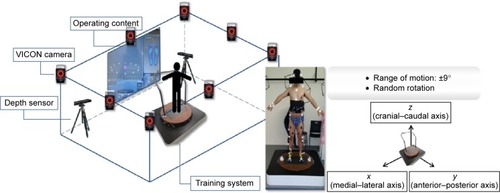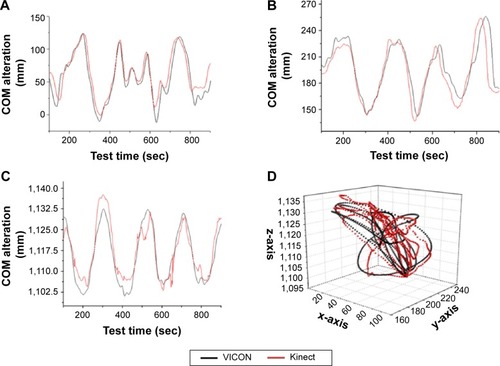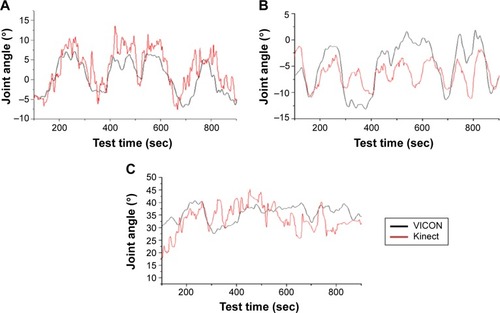Figures & data
Figure 1 Experimental configuration used to generate and characterize the motion of the participants.

Table 1 Summary of the center of body mass (COM) and joint angles measured using the Kinect system and the 3D infrared camera system
Figure 2 Changes in the center of body mass (COM).



